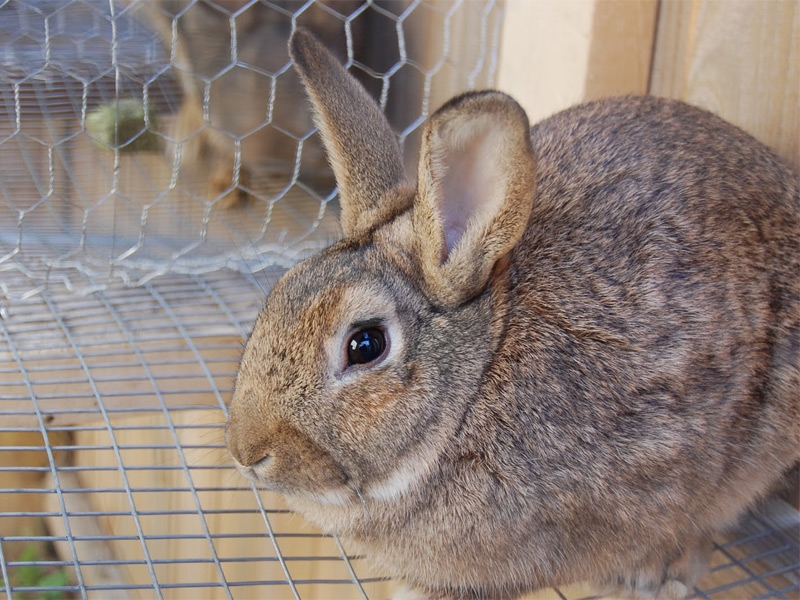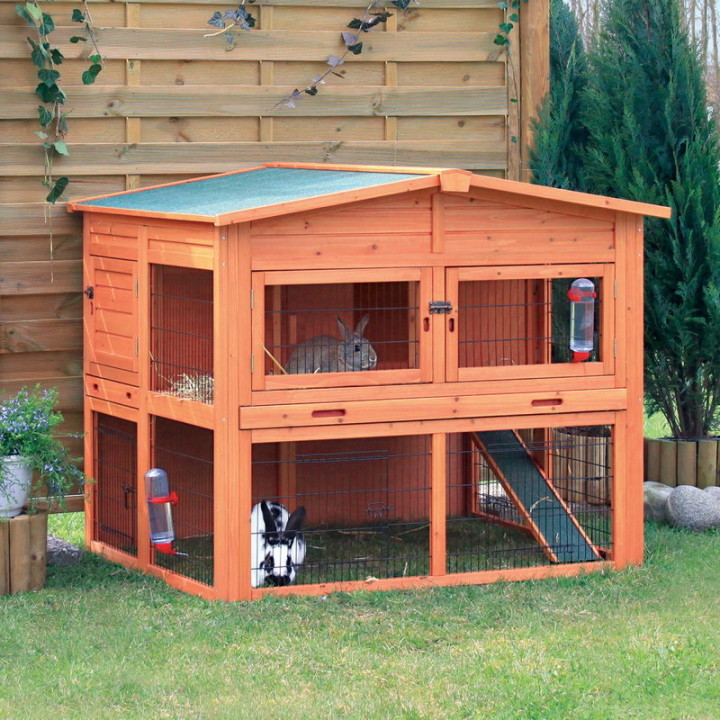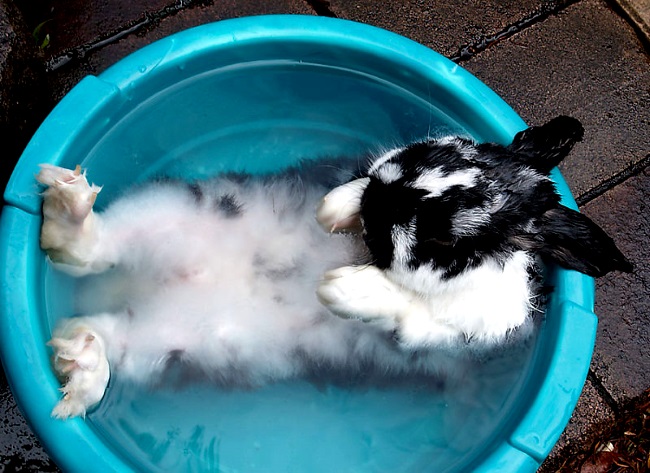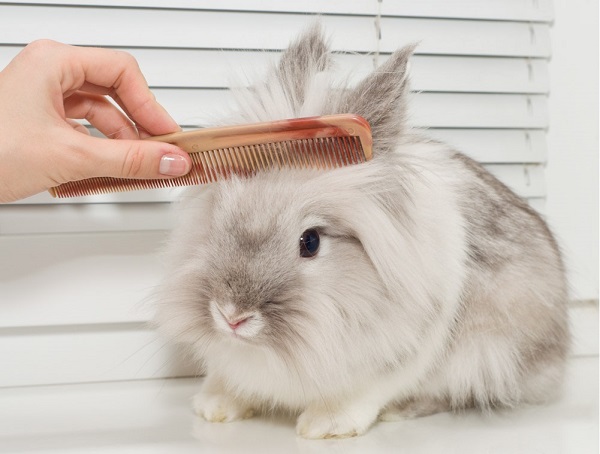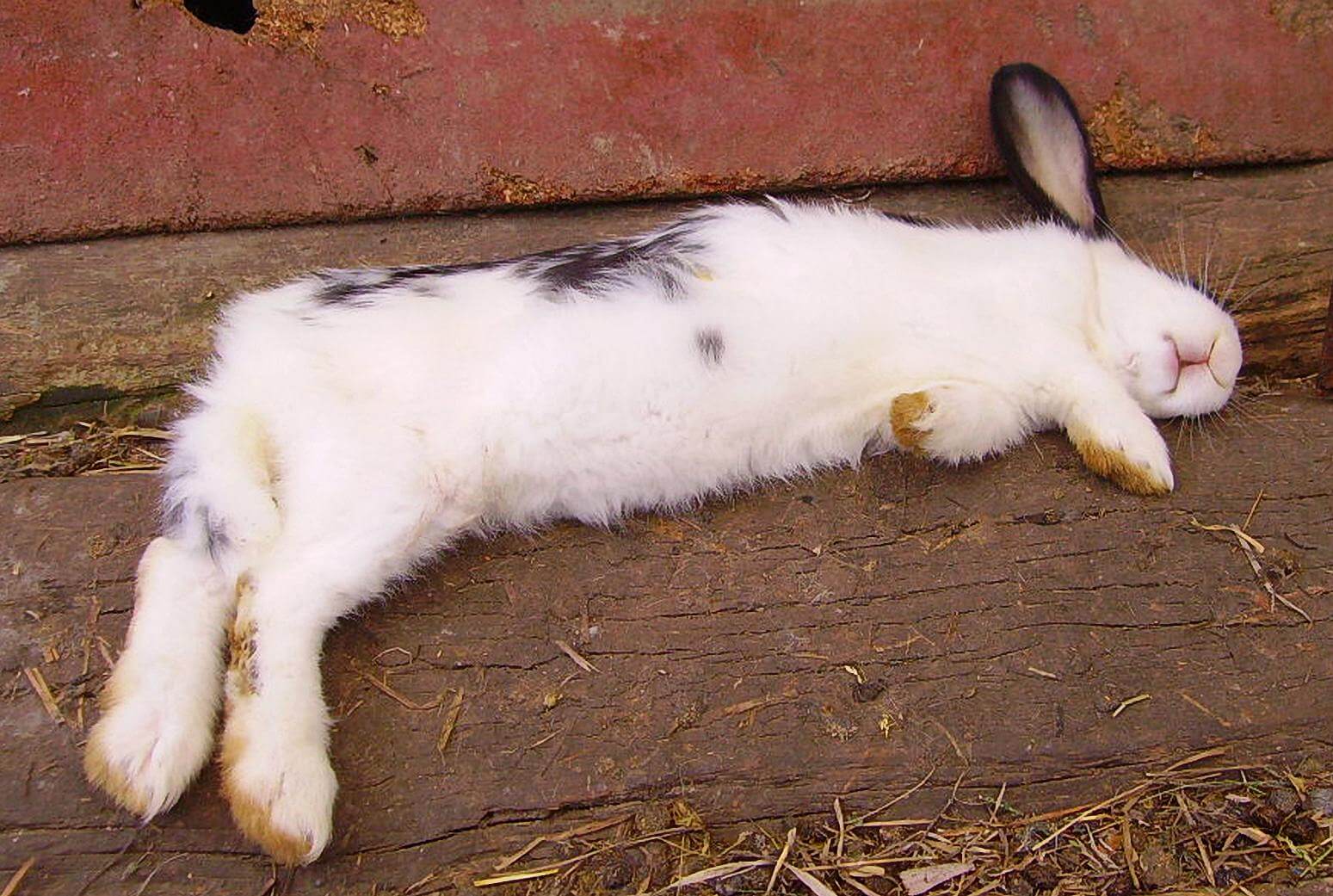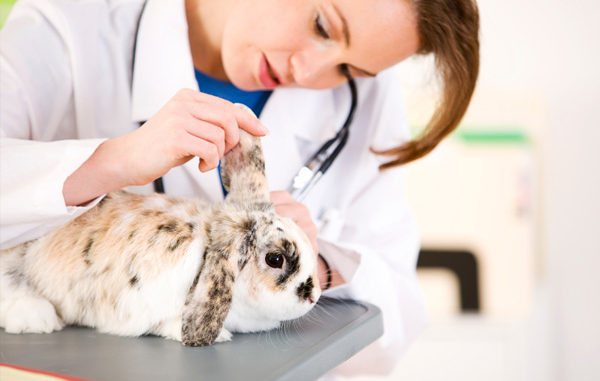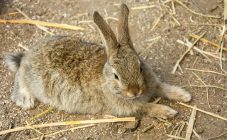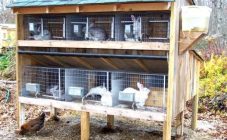Content:
Rabbits cannot be called heat-loving animals and the reason for this is not only warm fur, but also the peculiarities of the physiological structure of these animals. About whether rabbits die from the heat, how to save them from heat and sunstroke, is described in this article.
Optimal temperature for rabbits
In the wild, rabbits live in burrows. Accordingly, their usual temperature regime is several degrees lower than the surface temperature and is 13-15 degrees Celsius. The maximum temperature at which animals still feel relatively normal is +25 degrees.
With this information, novice farmers ask a number of questions about the temperature regime:
- How do rabbits handle heat?
The well-being of pets begins to deteriorate in proportion to the increase in temperature and at + 30 + 35 degrees, in the strong sun, they have heat or sunstroke. - Can rabbits die from the heat?
Yes, after a blow, death often occurs. But it is worth clarifying that they do not die immediately. About an hour and a half - this is the time they can hold out. And during this time, the animal owner should take rescue measures.
Rabbit fur is thick (depending on the breed), with an abundant undercoat, capable of protecting from the cold, becoming an aggravating factor for the animal in the summer heat.
But not only fur aggravates the situation, the third circumstance is the peculiarity of the thermoregulation of rabbits. Moisture does not escape from the pores of the rabbits; they are cooled through the pads on the toes and ears.
All domestic rabbit breeds suffer from high temperatures. But downy breeds are most susceptible to sunstroke (Angora downy, White downy). Moreover, if an adult with a well-developed immunity and a thermoregulatory system is capable of "resistance", then a baby rabbit and a nursing rabbit are the first victims in the summer heat.
Choosing the right housing for rabbits
How to keep a rabbit out of the heat is the main idea of a responsible breeder. The first thing to pay attention to is how the "housing issue" of pets is solved. The place in which they permanently live largely determines the quality and duration (if we are talking about downy breeds) of their life.
There are three types of housing:
- metal cage;
- wooden house;
- outdoor aviary.
Cage - naturally ventilated, easy to clean, pets are always in sight. But if the cage is outside and not covered from direct sunlight, this can aggravate the situation.
Natural ventilation is not always a plus. Rabbits are sensitive to drafts and complications may arise with gusts of wind. The cage on the street should be covered with an awning or placed in a shady place, preferably without drafts.
Therefore, one of the options for helping rabbits in the heat is the construction of wooden houses. Such houses, placed in a shady corner of the yard, will be able to keep cool even at high temperatures.For ease of use, such a dwelling should be easily carried from place to place.
As a variation of the above example, you can isolate the dwelling of rabbits from climatic and thermal manifestations as much as possible. For this, there are special means - non-combustible insulating materials (they can be purchased in hardware stores), both from heat and cold.
Building an open-air cage on the street is the best way to rid rabbits of the prospect of heat or sunstroke. The aviary will give the rabbits coolness and relative freedom of movement.
It is best to build an aviary in the shady corners of the yard, where pets can both relax and play. If a few burrows are dug on the territory of the aviary, then the wards will be able to hide in them from the heat.
How to help rabbits in the heat
There are additional ways that rabbits can be saved from the heat as well. These include access to water, ventilation, and pet grooming.
Access to water
What if the rabbit is hot? Cool, clean water is a prerequisite for rabbits in hot weather. Water is directly involved in thermoregulation. On a hot day, you can see how rabbits sit for a long time, sticking out their tongues. In this way, they regulate the amount of fluid in their body.
Water can be used in several variations:
- internal use (drinking);
- external use (bathing, cooling with ice compresses).
In hot weather, clean drinking water will save rabbits in the first place. The liquid should not be cold, the optimum temperature is slightly below room temperature, 16-18 degrees.
If an oblong shallow vessel with a small amount of cool water is placed in the habitat of the animals, the pets will find use for it. By moisturizing the paws, they increase the intensity of heat exchange processes in their body.
You can put a cold compress in the cage in the form of a plastic ice bottle and change it as the contents turn to liquid. The animals will cling to the container, and thereby cool their body.
An adult can be bathed independently by immersing the body and the tips of the ears in water. Five minutes a day is enough for the water procedure to help the wards survive the heat.
There should not be too much water in the makeshift pool to avoid getting into the ear cavity. This scenario is highly undesirable - inflammatory processes are possible. In general, to the question of how to save rabbits from the heat, the answer is: with the help of water.
Ventilation
This method is effective, but you need to approach it with caution, as mentioned earlier - rabbits do not tolerate a draft, an inflammatory process can begin in pets from intense airflow.
A haircut
Trimming is an effective method that can help withstand high temperatures. In addition, a haircut will provide wool for knitting warm winter clothes.
To trim a rabbit, you need dexterity and related equipment. It is better to use an electric shaver - it will not cause painful sensations and will evenly remove the hair with the undercoat.
Rabbits can be sheared when they reach 4 months of age. You only need to remove hair from the body; you should not touch your head. Females should not shave off their abdomen.
Signs of heat and sunstroke in rabbits
If the animal has been exposed to direct sunlight or in a space with high temperatures and no air circulation for several hours, then the pet is likely to experience heat or sunstroke.
The main signs of a blow are the behavior of the animal:
- drinks a lot;
- rapid pulse;
- breathes frequently;
- lies sprawled.
The pre-shock state is characterized by:
- chaotic movement of the pet around the house;
- overturning a container with liquid;
- redness of the whites of the eyes;
- immersion of the legs (or the whole body) in water.
Based on these signs, one can draw conclusions and prevent the animal from dying. If you do not take action, then blood circulation will weaken and end in oxygen starvation. The brain cells will begin to die off and the pet will die.
How to save a rabbit if it's already overheated
If the animal begins to die from heat or sunstroke, it is required to take prompt measures to normalize the condition of the ward:
- it is necessary to move the pet to a cool and darkened room with fresh air circulation (this will help cool the rabbit);
- an intensive massage of the ears and soft tissues of the legs should be performed (it is advisable to moisten the treated areas with cool water);
- you need to give the animal unhindered access to fresh vegetables and water.
When these conditions are met, it is highly likely that after 6-8 hours the animal will return to normal.
When a critical situation arises, you should not:
- carrying the animal in your arms for a long time - this will lead to an increase in the body temperature of the ward;
- immersing an animal in water is fraught with cardiac arrest;
- try to force drink or feed - the pet is weakened and unable to digest food.
If the outcome is successful, the rescued rabbit should be monitored for 3 days. With a weak body, a relapse may occur, and this will require more serious intervention. Whatever this happens, it is necessary to provide the animal with favorable living conditions with increased comfort, at least for the first time.
In agriculture, rabbits and heat are a combination that often leads to the death of animals. Rabbits are dying in the heat and in private lands. But if appropriate conditions for the existence of these animals are created in the nursery, death can be avoided. A responsible and humane approach to rabbits will be rewarded with an abundance of warm fur for winter clothing and shoes.
